Who Am I? (Spring Flowering Plant Edition)
by Deanna Deterding, Restoration Coordinator
Guess which plant matches each description! Each spring plant has been personified and they give hints to which species they are.
Word Bank
celandine poppy
Virginia bluebells
yellow rocket
harbinger of spring
garlic mustard
Jacob’s ladder
bloodroot
lesser celandine
- I’ve been away from my homeland for a long time and have grown bitter in my old age. To keep myself busy, my buddies and I like to cause trouble in the local community. Sometimes my cousin, who is from the community, gets arrested instead of me because we look so much alike.
Who am I? _____________________ - Wearing dresses of resplendent purples, blues, and pinks accented with greens, we love showing off our colors and hearing the awe in people’s voices as they gawk at our beauty. But more importantly the ladies and I gather in droves to prepare delicious food to support nature’s hardest workers for the very busy season ahead.
Who am I? _____________________ - I’m humble and quaint, lying in wait. I don’t shout from the tree tops but spread the word from the ground letting my other friends know it is time to celebrate.
Who am I? _____________________ - Surrounded by weaklings I take over the forest floor. I wait for strong waves of water to wash my troops and carry them to new lands to conquer. I will continue my reign as no one can figure out how to get past my defenses. This is my kingdom, and everyone shall know of my presence as I flaunt my golden yellow crown.
Who am I? _____________________ - Delicate yet sturdy. Standing yet creeping. I elevate my surroundings with my distinct look and prefer life in the shade. I live to create a welcoming environment and feed as many visitors of all types that come to my home.
Who am I? _____________________ - I came to North America as a humble doctor and quickly realized that my potential was wasted. They wanted to keep me confined, but my ambition was too great, and I needed to spread my influence and healing abilities far and wide! As my influence spread others started to complain, they said “there was no room for anyone else to thrive in the field”. But I can’t stop now, too much has happened. There are too many things I can’t take back… I won’t take back. This is my time for glory!
Who am I? _____________________ - Many are intimidated by me. I know that. But I can’t help it, my ancestors were the ones to form our long standing deal with the mound dwellers that make it hard for our communities to spread in this day and age. The deal: some of our children would be sacrificed to the mound dwellers for their survival and in return the mound dwellers would see to the protection of our children into their adult ages and spread them far and wide. Our children would be beautiful, but under the surface their bodies would be marked by the bargain with liquid fire. This has been our tradition since the binding of our two species and so it is very difficult for outsiders to raise our children even if they only have good intentions.
Who am I? _____________________ - Some say I’m picky, but I say I just have high standards. I like it cool but not too cold, shady with some sun but not too much, and I like having water to quench my thirst and a nutritious meal! Is that too much to ask for? When I get what I want, I will work really hard tending the garden from late spring to early summer, but after that I let the groundskeepers do my work for me because I just can’t handle the heat of the summer!
Who am I?_____________________
Answers
Each part of the original “Who Am I?” description is followed by the answer in bold.
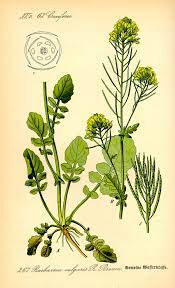 Yellow rocket (Barbarea vulgaris)
Yellow rocket (Barbarea vulgaris)
I’ve been away from my homeland for a long time (yellow rocket is originally from Eurasia that is invasive in North America) and have grown bitter in my old age. (It is edible, but after it flowers, it becomes bitter). To keep myself busy my buddies and I like to cause trouble in the local community. (Yellow rocket is an invasive plant that we have here at the LREC and it likes to form colonies but can be found scattered throughout an area.) Sometimes my cousin, who is from the community, gets arrested instead of me because we look so much alike. (The invasive yellow rocket (Barbarea vulgaris) is very similar looking to its native counterpart the American Yellow Rocket (Barbarea orthoceras).)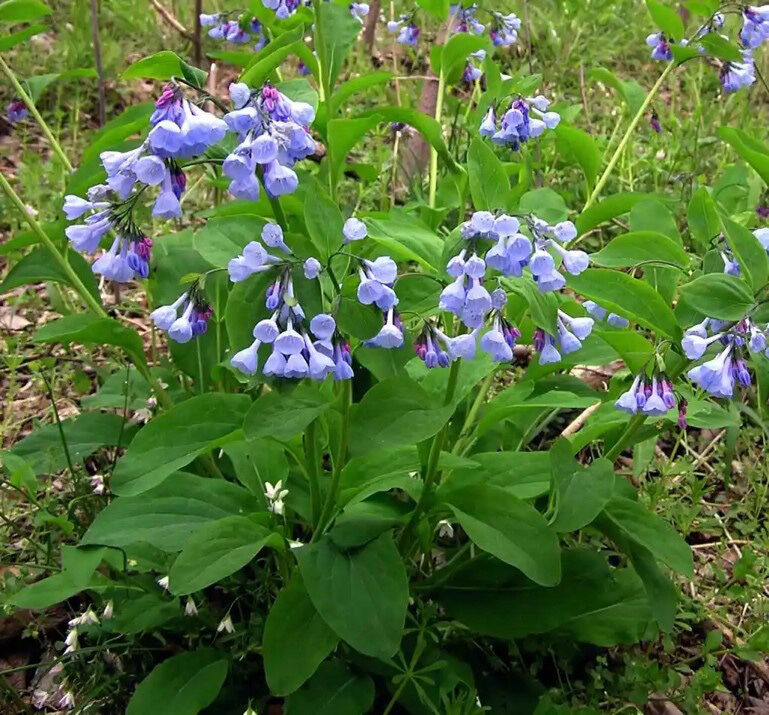 Virginia Bluebells (Mertensia virginica)
Virginia Bluebells (Mertensia virginica)
Wearing dresses of resplendent purples, blues, and pinks accented with greens, we love showing off our colors and hearing the awe in people’s voices as they gawk at our beauty. (Virginia bluebells start out with purple leaves and become green as they grow. The flower buds start purple or pink and as they extend into their bell-like formation they become a bright blue and are sometimes still pink or purple.) But more importantly the ladies and I gather in droves to prepare delicious food to support nature’s hardest workers for the very busy season ahead. (These flowers are vital to help sustain pollinators during early spring.)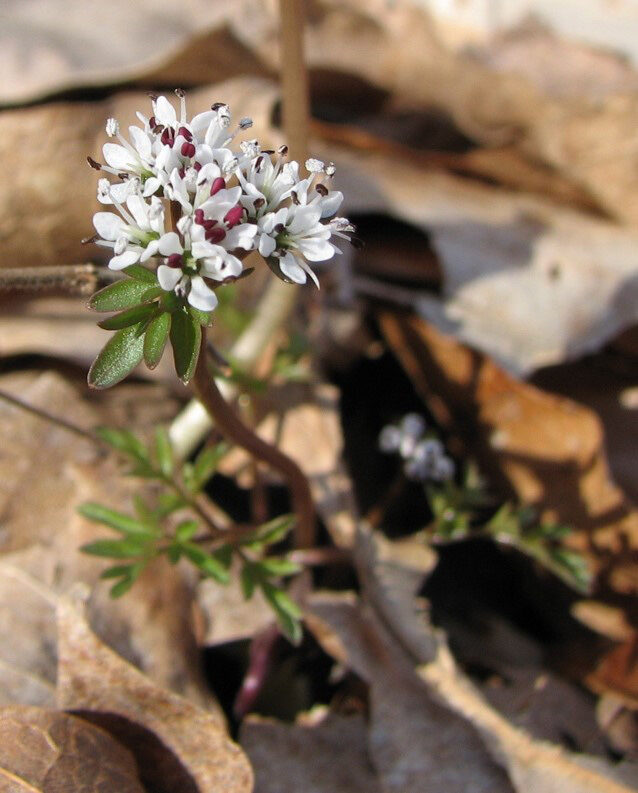 Harbinger of Spring (Erigenia bulbosa)
Harbinger of Spring (Erigenia bulbosa)
I’m humble and quaint, (The harbinger of spring is not a showy flower but is beautiful in its own way. The plant is small with the plant’s height starting at 2–3 inches and only reaching about 10 inches. The flowers themselves are only about ¼ inch.) lying in wait (It takes about 6–7 years for the plant to produce a flower but when it does, it is the first flowering native of spring). I don’t shout from the treetops but spread the word from the ground letting my other friends know it is time to celebrate. (If you find it, it means that spring is on its way and soon the other spring ephemeral flowers will start to pop out of the ground and flowering too.)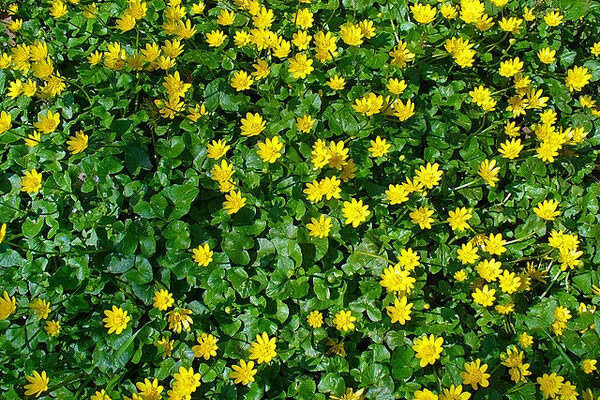 Lesser Celandine (Ficaria verna)
Lesser Celandine (Ficaria verna)
Surrounded by weaklings I take over the forest floor. (Lesser celandine is an aggressive and invasive plant from Europe and Western Asia. It thrives with disturbance and outcompetes the early native plants by flowering first and forming a dense carpet that covers the ground completely. It does eventually die back allowing for plants to grow after it is gone but it is very difficult to establish any early spring plant where it grows.) I wait for strong waves of water to wash my troops and carry them to new lands to conquer. (The plant is easily transported by water carrying clusters of bulbs (bulblets) and depositing them on creek edges and anywhere flood waters carry it. At the LREC we experience many flooding events so it is not a surprise that it has taken over our woodlands in the spring.) I will continue my rein as no one can figure out how to get past my defenses. (Getting rid of lesser celandine is difficult because we cannot remove all the bulblets from the ground. Using herbicide is the most effective way to manage it in large quantities but can damage other native plants in the process.) This is my kingdom and everyone shall know of my presence as I flaunt my golden yellow crown. (The plant is characterized by a bright yellow ring of many petals that is common in the buttercup (Ranunculaceae) family.)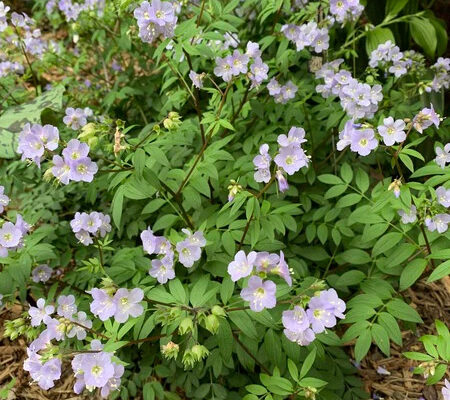 Jacob’s Ladder (Polemonium reptans)
Jacob’s Ladder (Polemonium reptans)
Delicate yet sturdy. (Jacob’s ladder has a delicate look to it but is not as delicate as it may seem.) Standing yet creeping. (The plant grows to about 20 inches tall but its ladder-like leaves often are characterized as creeping. The scientific name is Polemonium reptans with the specific epithet “reptans” being Latin for creeping.) I elevate my surroundings with my distinct look and prefer life in the shade. (Jacob’s ladder likes shady conditions found in a woodland.) I live to create a welcoming environment and feed as many visitors of all types that come to my home. (It provides pollen for beetles, syrphid flies, and bees and nectar for moths, butterflies, and bees).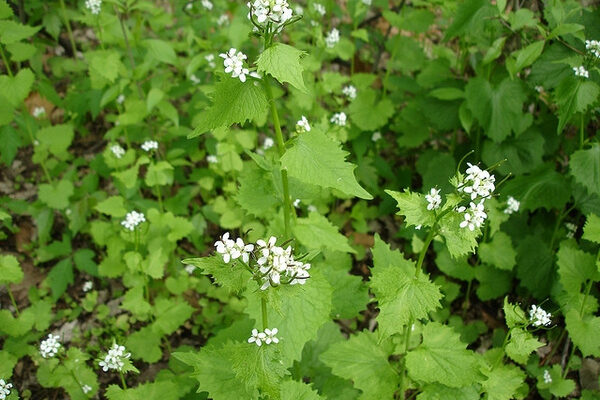 Garlic Mustard (Alliaria petiolata)
Garlic Mustard (Alliaria petiolata)
I came to North America as a humble doctor and quickly realized that my potential was wasted. (Garlic mustard is originally from Europe and Asia and was introduced to North America for its medicinal properties as an antiseptic and diuretic along with many other benefits.) They wanted to keep me confined, but my ambition was too great and I needed to spread my influence and healing abilities far and wide! As my influence spread others started to complain, they said “there was no room for anyone else to thrive in the field.” (It has now become one of the worst invasive species for woodlands and forests and is responsible for greatly reducing diversity of all species found in these habitats. Garlic mustard takes over by outcompeting other species for water, nutrients and light.) But I can’t stop now, too much has happened. There are too many things I can’t take back…I won’t take back. This is my time for glory!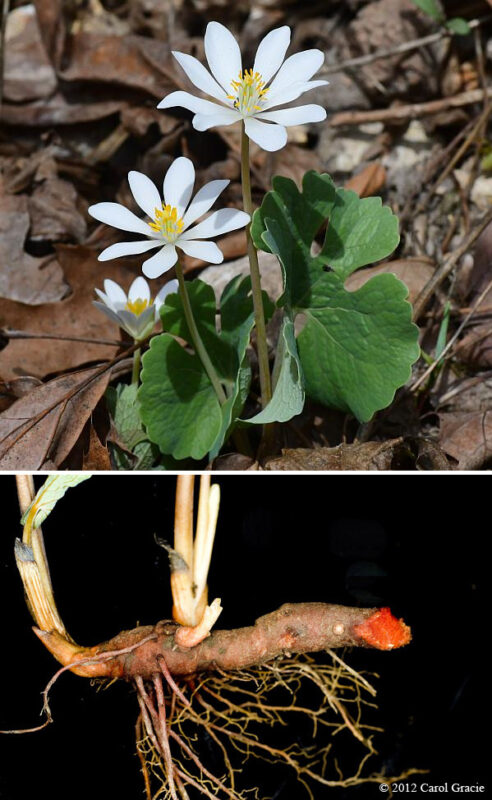 Bloodroot (Sanguinaria canadensis)
Bloodroot (Sanguinaria canadensis)
Many are intimidated by me. (Bloodroot is a difficult plant to grow from seed and takes 2 years to germinate.) I know that. But I can’t help it, my ancestors were the ones to form our long standing deal with the mound dwellers (bloodroot and ants have a mutualistic relationship) that make it hard for our communities to spread in this day and age. The deal: A part of our children would be sacrificed to the mound dwellers for their survival and in return the mound dwellers would see to the protection of our children into their adult ages and spread them far and wide. (The ants are attracted to eat a sweet fleshy appendage called an elaiosome that is attached to the bloodroot seeds and in return the ants carry the seeds back to their ant homes and disperse the seeds.) Our children would be beautiful, but under the surface their bodies would be marked by the bargain with liquid fire. (Bloodroot is a very pretty plant above ground but below the ground the roots have a blood red appearance to them, hence the name bloodroot.) This has been our tradition since the binding of our two species and so it is very difficult for outsiders to raise our children even if they only have good intentions. (It seems that the plant’s relationship with the ants provides the best conditions for this plant to germinate and grow and is difficult for humans to mimic.)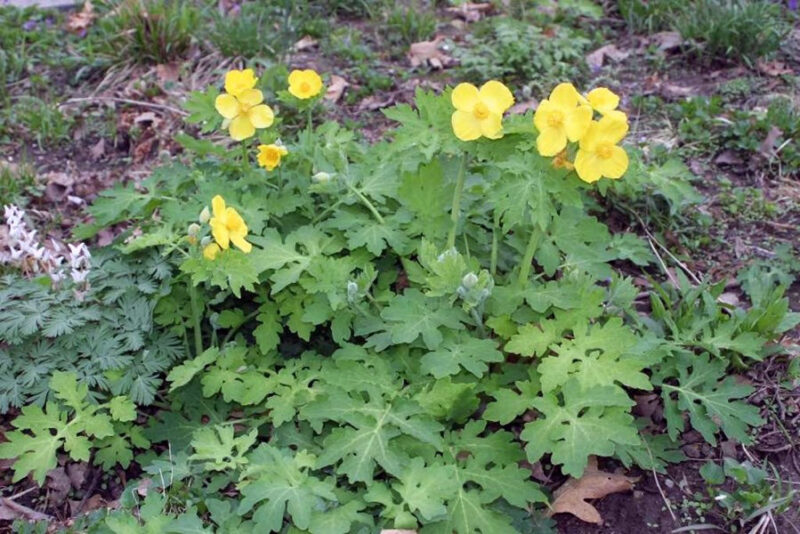 Celandine Poppy (Stylophorum diphyllum)
Celandine Poppy (Stylophorum diphyllum)
Some say I’m picky but I say I just have high standards. I like it cool but not too cold, shady with some sun but not too much, and I like having water to quench my thirst and a nutritious meal! (Celandine poppy is a great shade garden plant and prefers well draining, humus rich soil and especially needs moisture going into the summer.) Is that too much to ask for? When I get what I want, I will work really hard tending the garden from late spring to early summer (blooming from April to June and then going to seed) but after that I let the groundskeepers do my work for me because I just can’t handle the heat of the summer! (Later in the summer, ants disperse this plant’s seeds.)